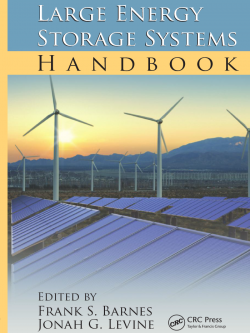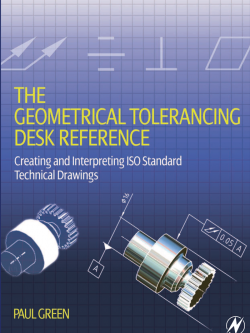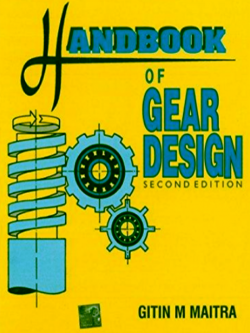Description
When Tom Casson contacted me late in 1997 relative to a second edition of this book, I leaped at the opportunity because immediately following publication ofthe first edition I realized how much better that edition could have been. I was not, in late 1997, even discouraged by the daunting schedule Tom specified. He was hoping that all of the rewriting could be accomplished in a one-year period. I more or less met his schedule.
Now, exhausted by the enterprise, I realize the wisdom of that trite phrase, “Look before you leap.” This book has been substantially revised. A superficial comparison of the two editions will spot quickly some changes; example problems and certain chapters now sporting frontispieces being most prominent. The problems were added at the suggestion of reviewers of the proposed second edition. And the frontispieces were inserted to provide some appeal in this age of the required “visual impact.” But there have also been more substantive changes made. Even though the order of the book remains rather much as it was in the first edition, almost every chapter has been altered.
The most prominent changes are to Chaps. 9 and 10, which deal with low-temperature fracture and these chapters have been completely rearranged. Chapter 9 (Fracture Mechanics) now focuses on the engineering science, and application of, fracture mechanics and auxiliary measures of fracture resistance such as the impact test. Chapter 10 (Toughening Mechanisms and the Physics of Fracture) now mainly deals with toughening mechanisms and fracture mechanisms in flaw-free materials. The sections on toughening mechanisms pay considerably more attention to ceramics and composites than was provided in the first edition. Since material has been added to many of the chapters, in an (almost successful) attempt to keep the length of the book within bounds some material has been deleted. A litany-like listing of the changes made in the remaining chapters follows.
In Chap. 1 (Overview of Mechanical Behavior), I have deleted much of the “mechanics” contained in the first edition, although discussion of yield criteria and a brief description of Mohr’s circle are retained. A brief section on fracture toughness measurement has been added.
In Chap. 2 (Elastic Behavior), moduli variations among the material classes are compared and the physical bases for these variations rationalized. The treatment of polymer elasticity has also been expanded.
The changes made to Chap. 3 (Dislocations) are minor; discussion of twinning has been expanded and the evolution of dislocation arrangements with plastic strain is now treated in more detail.
Chapter 4 (Plastic Deformation in Single and Polycrystalline Materials) now considers in more detail the plastic-flow behavior in the different material classes and compares plastic flow (e.g., wavy vs. planar slip) and workhardening characteristics of the fcc and the bcc transition metals.
The treatment of particle hardening in Chap. 5 (Strengthening of Crystalline Materials) has been expanded and is now more up-to-date. Here I have attempted to emphasize the similarity in the expressions for strength due to different particle hardening mechanisms and to also indicate their similarity to expressions for the strength arising from solid-solution hardening. A case study on the development of microalloyed steels has been added. Off-axis behavior of aligned fiber composites is now treated in more detail (Chap. 6, Composite Materials), and there is more discussion on “Modem” composites in this chapter.
Chapter 7 (High-Temperature Deformation of Crystalline Materials) remains much the same. However, a major omission in the first edition-solute drag creep and the Portevin-LeChatelier effect-are included in the current edition. And a case study on tungsten light bulb filaments has been added. Details on polymer molecular architecture (which can be found in elementary materials science and engineering texts) have been deleted from Chap.
8 (Deformation of Noncrystalline Materials) and the rheological details of polymer deformation are not discussed to the same extent they were in the first edition. However, discussion of silicate and metallic glasses has been slightly expanded.
Chapter 11 (High-Temperature Fracture) has been reduced in length. This was achieved by eliminating the detailed mathematical description of void growth. At the time of the first edition, I had thought that this promising approach to prediction of creep fracture times and strains would soon see engineering implementation. However, the lack of ancillary physical property data and our inability to realistically mimic void spacing and the like during creep suggested a more condensed treatment was in order.
Chapter 12 (Fatigue of Engineering Materials) has, I believe, been improved by including a section treating design against fatigue fracture in “flawed” and in “flaw-free” materials. This chapter also now considers the relationships among the endurance limit, the fatigue threshold stress intensity factor, and material fracture toughness. How these relationships differ in the different material classes is also discussed. And a brief description of substructure evolution (e.g., persistent slip bands) during cyclical straining of metals has been added.
Chapter 13 (Embrittlement) has not been changed much. However, corrosion fatigue in “flawed” and “flaw-free” materials is now treated.
Chapter 14 (Cellular Solids) is new. This addition is justified because of the technological importance of these materials. And the mechanical behavior of cellular solids well exemplifies the interaction between mechanics and microstructure that is a characteristic feature of how a “materials person” approaches mechanical behavior.
This book, I hope, comprehensively treats the mechanical behavior of materials. The extended treatment is intentional. Individual faculty members deem certain topics more important than others do. However, (as in many academic matters) seldom do facu1ty members agree on what these more important topics are. Thus, the breadth and depth of this book is an attempt to permit individual instructors to select those topics they wish to emphasize and to do so at a level they consider appropriate. Because the book is comprehensive, to adequately cover all of the material in it at the level at which it is addressed in the text would likely require two full semesters of a typical three-credit course. Most curricula do not have the lUXUry of allocating this amount of time to mechanical behavior of materials. Some experience indicates the following types of scenarios are possible with the book. A twoquarter three-credit course or a four-credit semester course could address most of the topics covered in the book. This would require some selectivity on the part of the instructor, both with respect to chapters covered and within individual chapters as well. A logical “division” is that approximately half of the course would consider deformation and half of it fracture. A four-credit quarter course or a three-credit semester course would call for further culling in individual chapters and perhaps deletion of some material (e.g., Chaps. 13 and 14).





